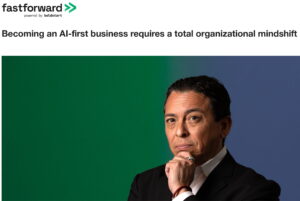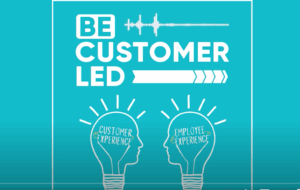by: Chris Ward, MyCustomer
In his 2013 book, What’s the Future of Business?, author and thought-leader, Brian Solis highlighted the four moments of truth that can help businesses improve customer experiences:
Zero Moment of Truth: The term coined by Google to explain the event in which people now search for information online and make decisions about brands in that instance.
First Moment of Truth: The point when a consumer sees a product/ service for the first time and formulates an opinion about it.
Second Moment of Truth: The subsequent “collection of moments” that incorporate your customers’ senses.
Ultimate Moment of Truth: When an experience with your brand leads customers to publish some form of content expressing their use and enjoyment of your product or service, which becomes a form of advocacy for other people to find and share.
However, in his new book, X: The Experience When Business Meets Design, Solis expands further on the topic, establishing some of the extra steps that determine if customers become advocates of a brand or end up with experiences that are “passive or uninspiring”.
Brian recently spoke with MyCustomer about four additional elements to consider in the process of establishing your brand’s moments of truth.
Connecting the customer journey
“When we look at the customer journey, at present, we do so in a very linear way, and we distribute responsibility for that customer journey to different groups in charge of managing different aspects,” says Solis. “We give them budget, we give them personnel and we give them different metrics to try and optimise each component.
“But in a world where the customer journey is becoming increasingly non-linear, we can paint a much more accurate picture of how digital customers are interacting in different ‘moments’, be it before, during or after a transaction. We can ascertain how customers are making decisions, and we’re able to establish how to improve each of these moments of truth, and more importantly, how to connect the dots between them.”
Understanding micro-moments
“It’s important to understand micro-moments,” emphasises Solis. “Google’s research into how customers are making decisions. Understanding the decision-making journey for items outside of your remit, like purchasing a car, or a television, will help you to see first-hand what was different in the decision-making process and also better understand what compels people to take steps forward.
“When you go through these moments it’s revealing. You can compare peoples’ steps versus the existing journey you have in place and find missed opportunities, existing touchpoints, content strategies, etc. You get to understand the people-first approach as opposed to taking a touchpoint-first approach.”
Switching the focus away from touchpoints
Solis notes: “It’s not unlike customer journey mapping, but it’s less touchpoint-centric. Often, you map out the journey and then you look at how customers interact with it. Things like mobile strategy, social strategy – it takes you through channels and what touchpoints you have. Comparing it with the decision-making journey, you’re mapping from a blank canvas. Specifically drawing journeys based on how and why customers make certain decisions.
“An example is how you buy a car…If you take this process you’ll highlight the touchpoints required as well as the touchpoints already involved in your own journey. A great example that often crops up in this process is YouTube. If I’m an airline, I’d look at how people make decisions in a complementary industry to try and ascertain how I might be able to lean on these different channels. What are people using airlines for, predominantly? Going on holiday. The holiday destinations your airline serve are almost certainly going to be something your customers use YouTube for in their decision-making, so you need to ask how you can serve this touchpoint based on that knowledge.”
Rethinking digital
“Don’t be put off by people telling you that you have to “look at the overall customer experience” and not just digital. There are actually some benefits in taking a digital-only stance with some of this planning, because it will help you to relieve pains that aren’t always obvious because you weren’t looking hard enough,” explains Solis.
“Take the television remote control – for years we thought we were reimagining the good-old remote control when actually, we weren’t changing anything at all. It took the mobile phone, swiping and voice recognition for the penny to drop and for companies to start considering whether remote controls might not be the best option. But that was only achieved by taking a digital decision-making approach to a historically analogue issue.
“Ecommerce sites are the transactional equivalent. We largely continue to build on the same web-based framework of traditional ecommerce when the reality is, we have things like Tinder showing us that there’s innovation in swiping, and there’s the user interactions of pinch and zoom. Nobody can say we’ve even scratched the surface of what ecommerce has to offer, but it only takes someone to sit down and reimagine things and then innovation will come in waves.
“Most moments of truth are out of reach of any single group in an organisation. If someone is responsible for mobile, someone for social and someone for ecommerce, well these groups are unlikely to be talking to each other enough to have the collective capacity to tackle moments of truth. It’s more holistic than most organisations give credit for. Trying to make improvements for one moment and not every moment is actually incredibly limiting. That’s part of the challenge as well as the opportunity. It requires people across silos to come together to work as a collective to improve the overall journey.”






Leave a Reply